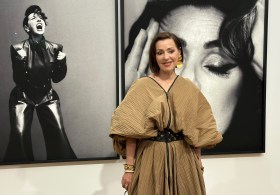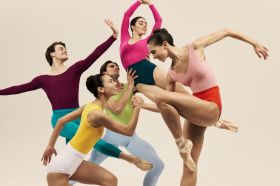How much do you know about the creative world of new media?
As technology embeds itself into the art scene, many of us once fully versed in the tools and mediums of creative practice may suddenly feel like fish out of water. The scope of possibility within new media, and the lexicon that supports it, is fast moving, alien and difficult to decode.
That said, it is undeniably here to stay. Take the quiz below to find out how well have you kept up in the technology-rich landscape of new media.
1. What does GUI stand for?
a) General User Integration
b) Graphical User Interface
c) Gross User Issue
If you guessed B you’re off to a good start. Also known as ‘gooeys’, graphical user interfaces are on-screen visual indicators that people interact with when completing a digital task. Many (but not all) new media platforms require interaction via GUI’s.
For those wanting to take a step back and first understand the parameters of new media, Kate Geck, new media artist and Lecturer of Digital Media at NMIT explains: ‘A new media platform is a framework for running an application that involves digital interfacing and varying interaction modes that generate audio-visual content. They’d be defined by their capacity to interface between people and some kind of technology.’
Computers, phones, and anything else you can digitally interact could be considered a new media platform. When you add visuals to the interface, that’s a GUI, and a familiar face in the new media scene.
2. What is rich media?
a) Media with more than five zeros in the bank
b) Media infused with dark Brazilian chocolate
c) Media with multiple forms such as a combination of video, audio and text
While all are technically correct, the answer we’re looking for here is C. ‘Rich media typically refers to new media with interactive or dynamic capacities. Things that can be embedded, downloaded, clicked and manipulated by the user, or that modify their content to suit the user,’ said Geck.
In other words, the term ‘rich media’ basically describes products with multimedia capabilities. A recognisable example is the instant-play videos on websites or banner ads tailored to your search history.
3. What is Web 2.0?
a) A grand technical update to the World Wide Web
b) The cumulative changes to web pages on the World Wide Web
c) A progressive style of hip hop
While A may seem like the obvious choice, the correct answer is actually B. Coined around the turn of the millennium, Web 2.0 refers to the general online shift from static sites to interactive sites, which in turn allows for virtual communities and user-generated content.
According to Geck, ‘Web 2.0 is all about connective media, and allows users to become active participants and contributors to web content.’
This allows for connective media, in which multiple parties can connect digitally through social, telecommunication or video-communication technology. The possibilities this kind of media presents have not yet been exhausted and innovative new media arts projects are emerging each day.
4. What is haptic technology?
a) A digital technology that automatically renders avatars to your verbal specification
b) A tactile feedback technology that can use touch as a trigger for data activation
c) Yet another thing that I don’t understand
The correct answer is B, although A would be a lot of fun. Those who answered C can also have a point for being honest.
While you may assume haptic technology belongs to a specialist area that bears no relevance to you, it is actually more omnipresent than you may think.
According to Geck, ‘Haptic interfacing allows the sense of touch to be used as a cue and controller for a system’s data. Nintendo Wi remote controls that rumble/vibrate when you do things are an example of a system producing haptic feedback for a user to react to.’
The combination of sensors and art is a pioneering field of new media where the complex possibilities within are is still being discovered. More and more sensors are becoming designed that react to light, sound, temperature, chemicals, pressure, electromagnetic energy, ‘… pretty much any physical property that can be measured can then be used to control a sensor,’ said Geck.
5. What is the metaverse?
a) An augmented reality environment
b) A cool place to hang out, like Timezone
c) A parallel universe predicted by some strands of string theory
The correct answer is A, though B is also arguably correct. ‘The metaverse is a fictional space imagined by Neal Stephenson in his cyberpunk novel Snow Crash, published in 1992. Since then it has actually evolved to become a universal concept of an augmented reality environment. This conceptual space would allow virtual and real objects to be augmented by one another (and theoretically sentient constructs), potentially via/within the Internet,’ said Geck.
The future of the Internet is often imagined as this 3D virtual universe where people can socialise and do business.
When asked about the destiny of new media, Geck has some more specific premonitions. ‘Post WIMP (windows, icons, menu, pointer) interfaces will continue to evolve to become thought controlled, immediate and parallel. We will think within networks and exist in multiple real-time aspects. Cells and pixels will begin to interface more directly and life will be even more complicated and invasive.’
In other words, resistance is futile.
(Pictured: Digital artwork by Kate Geck (cropped))





